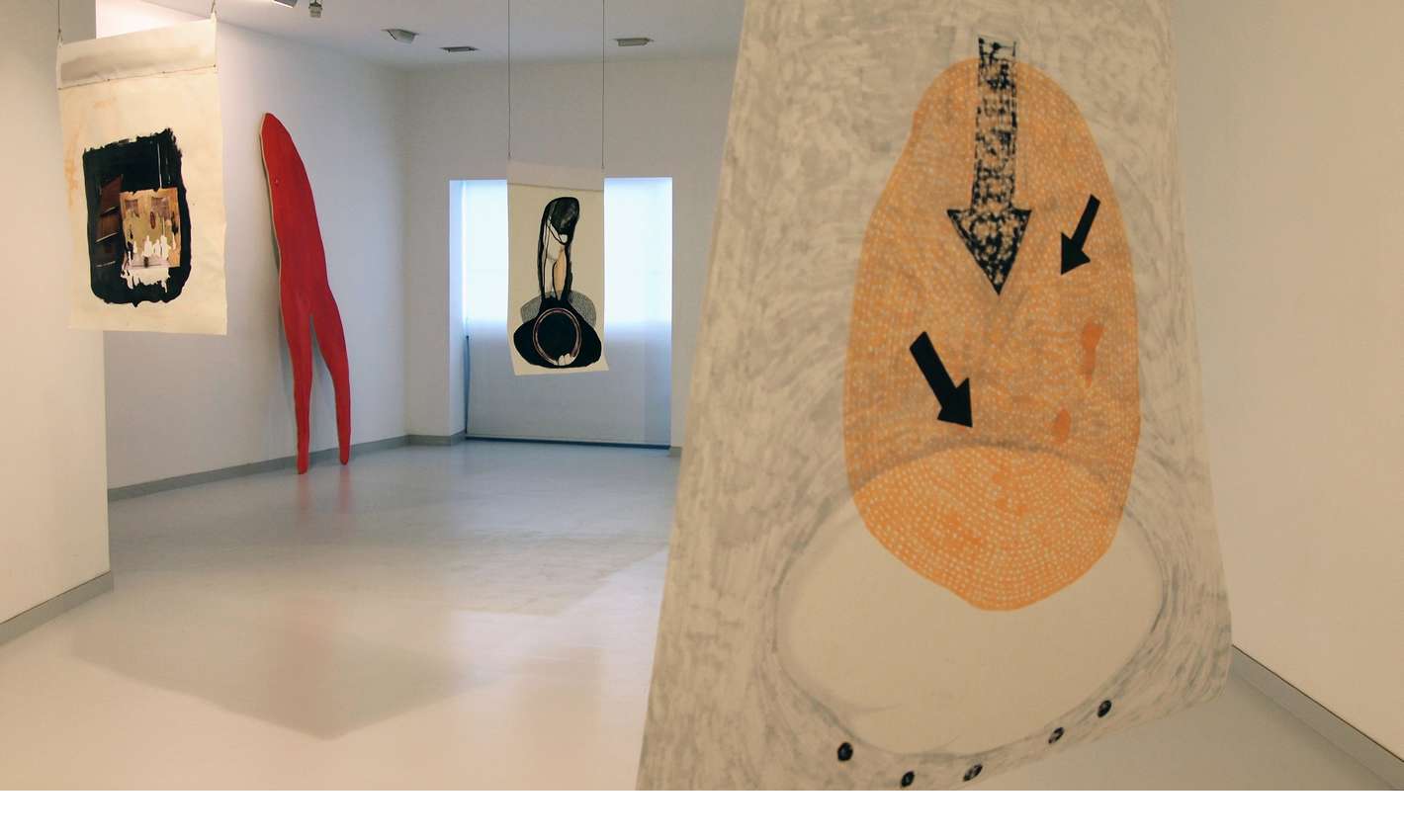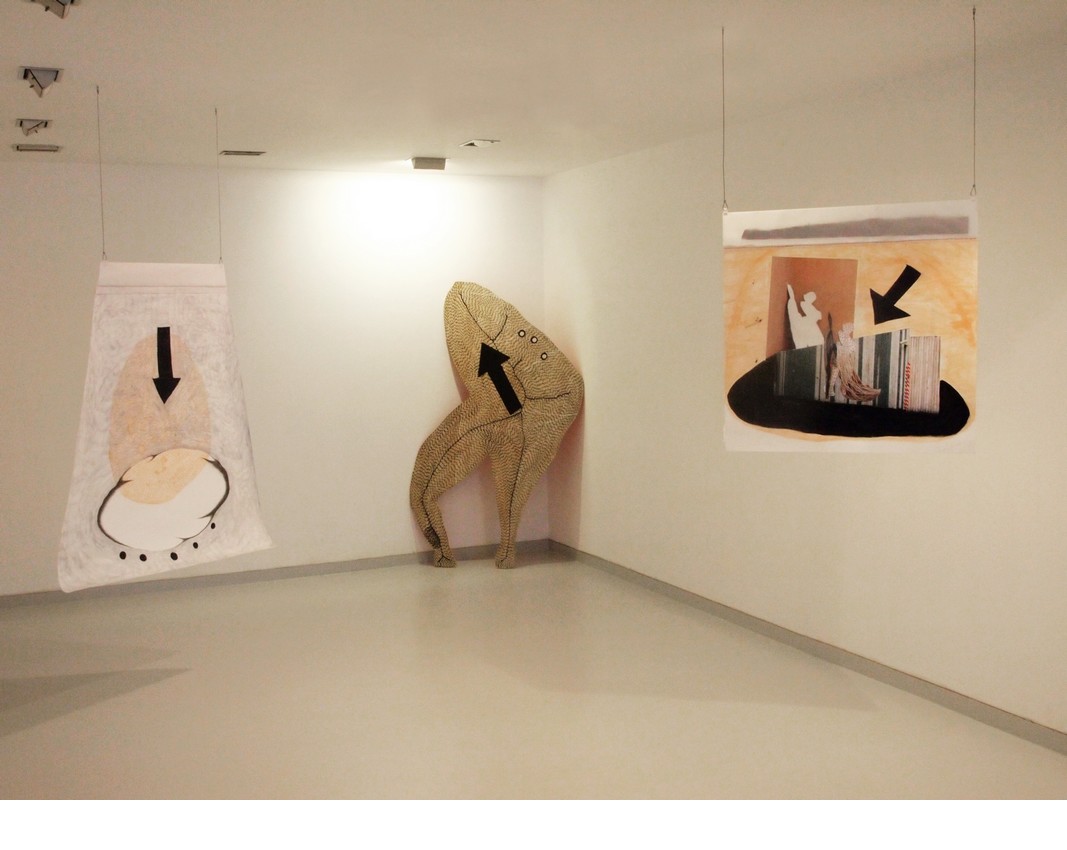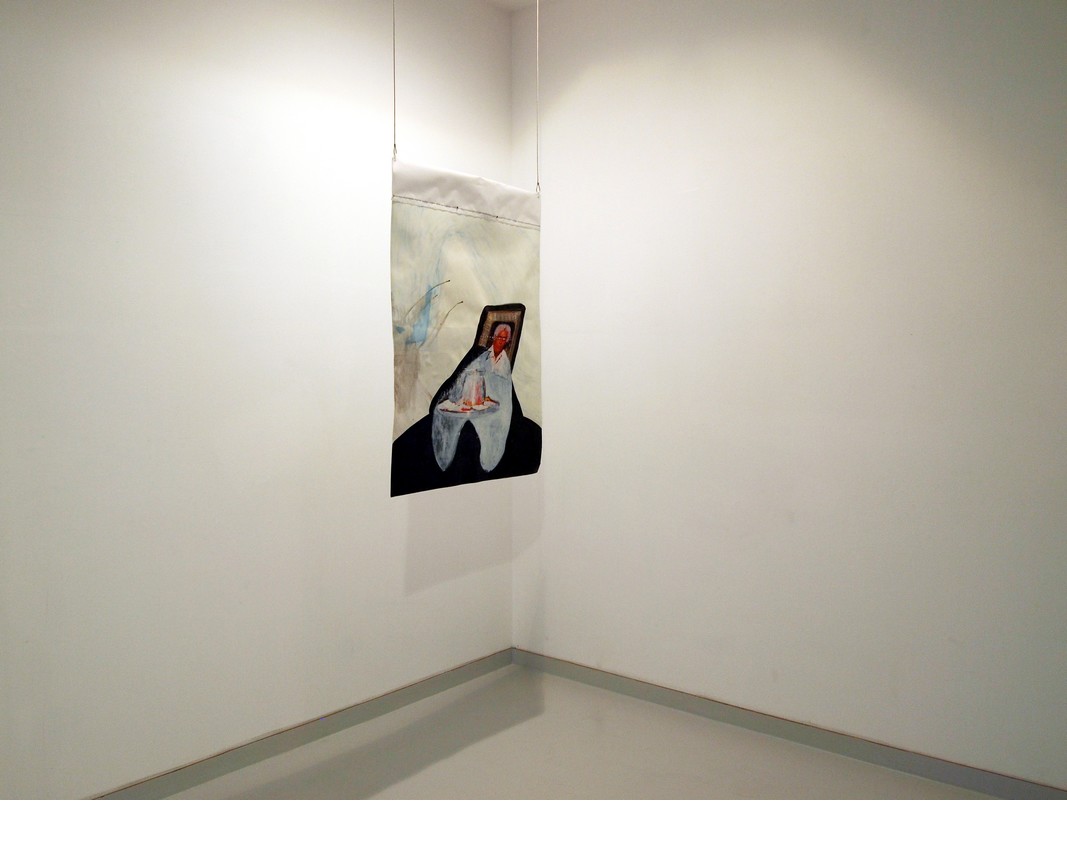Rashm I: The corridor of rasm running from 4 th November to 15th December 2010, was a solo exhibition at Qbox gallery in Athens. The work was developed during a two month residency on the island of Tzia.
Full press release below:
Rashm the First, the Corridor of Rasm by Ana Luiza Varella
Rashm is an Arabic word for drawing in different mediums, coined from rasm, to draw. In geopolitical terms, a corridor is “a strip of the territory of one nation straight passing through that of another.” In a domestic environment, a corridor is a passage between rooms. In both cases, to be in a corridor means to be at the threshold, be it of another nation-state or a kitchen. Thus a corridor may entail movement and steadiness, but it can also nurture anxiety and instability. The Corridor of Rasm is a corridor of drawing. That is, it’s a space where gesture and representation coalesce to generate new meanings.
Radhika Khimji’s pocketsize notebooks have always played a central role in her work. They articulate the primal and unmediated urge to acknowledge and understand the world through drawing. She wants to achieve the same looseness and casualness of making and showing the notebooks with the new large scale pieces. Many of the drawings are double-sided and although the artist distinguishes front from back. There is no clear-cut hierarchy. Rather, both sides depend on each other. Colours bleed through the paper and one side is completed or troubled by the other side’s imagery. Yet the corridor makes it impossible for the viewer to see the two simultaneously and condemns him to a peripheral and unstable viewpoint. A particular temporality is implicated by the relentless moving around drawings, required for to take in the full picture, and not unlike the continuous turning of pages necessary to see a full notebook. To put it differently, the large-scale drawings emulate the notebooks because of the experimental and fragmented way of seeing they demand from the viewer.
Khimji’s practice favours touch over sight. The surface of each image alludes to a myriad of textures, including that of the paper itself. Some drawings are more saturated than others, but they’re all assembled from a combination of cropped photographs, areas of paint and traces of pen. And each of the latter alludes to textures beyond their immediate appearance, multiplying the physical grasp of a single picture. The artist gives precedence to the process of constructing images and renders it as tangible as possible. The drawings, like the figures in them, are forever on the verge of becoming. What is at stake is touch as an elemental and yet deceitful way of mapping the world. At times, there’s a desperate need to literally hold on to something stable. One may turn to the recurring images of ladders, windows and gutters, which serve as virtual handles to enter or exit the picture plane. Or to the geometric shapes that ground many of the drawings.
Ultimately, to walk down The Corridor of Rasm is not just to become aware of one’s body as Other, but also to advance a new viewpoint from which to observe and inhabit it. It’s an unsettling and new position, where one is required to accept the precariousness of sight and to pivot, despite being in a corridor. The Corridor of Rasm is an expanded field of drawing and a site of emancipation.


